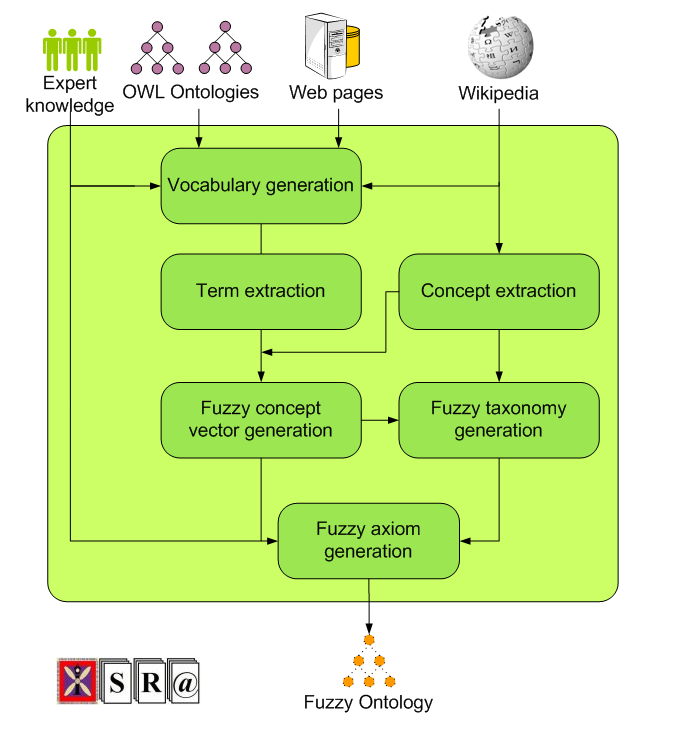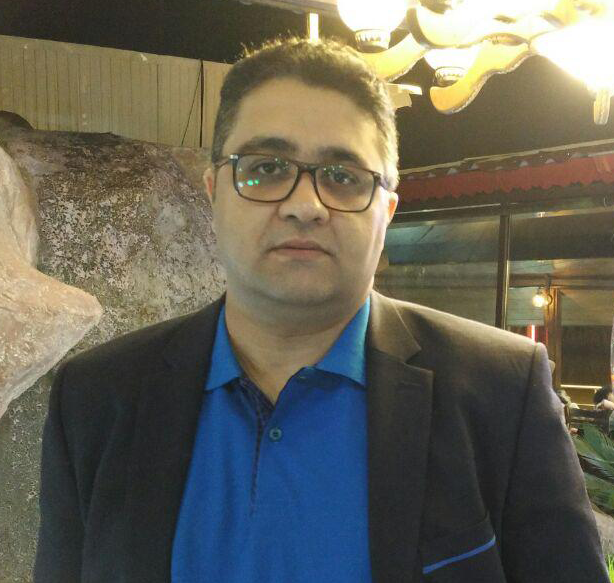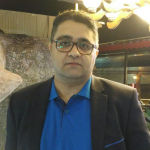ABSTRACT
INTRODUCTION
In the last decade, web technologies have become the silver bullet for information spreading and service providing across the world, as well as a major factor in the pervading of computers in everyday life. Nowadays the World Wide Web is a global showcase where providers and consumers meet to exchange data, information, opinion, and, of course, goods and money. The Web has grown, but the philosophical ground is the same as in Tim Berners-Lee’s initial work [2]: to publish and link documents to be read and processed. Web documents can be static, i.e. pre-generated text and media, or dynamic, i.e. responses generated on-the-fly by a server application to satisfy a user request (probably accessing to other resources, as databases). Static document navigation retrieves multimedia data as it has been uploaded to the server, whereas dynamic generation can be viewed as the execution of a remote program which serves as a result a readable document. On top of the plethora of existing technologies, we remark Web Services as the last trend to implement remote access to enterprise applications independently of the programming language and the underlying communication protocols. The next step in the evolution of the Web is to automate the document processing. Tim Berners-Lee proposed to extend the current web to give information a well-defined meaning, better enabling computers and people to work in cooperation [3]. The key to reach this Semantic Web is the use of metadata to annotate documents; thus, software agents would be able to search, locate, discover, or link documents better than today lexical-search engines. Semantic Web Services [7], [17] (SWSs) extend Web Services as the Semantic Web improves the current Web. Semantic mark-up for Web Services will allow software agents to automatically discover, invoke and compose services. With information described semantically, a service broker could satisfy a complex user request by searching a services registry, matching the most suitable service (or services) and, if necessary, composing the individual results to perform the full task. OWL-S is a language for SWS representation, being actually an OWL ontology to annotate Web Services for adding semantic information. Externally defined knowledge plays a major role in each OWL-S description. OWL-S offers a generic framework to describe a service, but to make it truly useful, domain knowledge is required. For example, domain knowledge is used to define the type of functionality the service offers as well as the types of its parameters. Domain knowledge is represented in an OWL ontology. Nowadays, it is widely agreed that current Semantic Web technologies are not appropriate to deal with imprecise and vague knowledge, which is inherent to several (actually, most) real world domains [28]. Fuzzy set theory and fuzzy logic [30] are suitable formalisms to handle these types of knowledge. In the setting of fuzzy logic, the convention prescribing that a statement is either true or false is changed. This theory is based on the notion of fuzzy set. Rather than belonging to a set or not, every element of the domain partially belongs to a fuzzy set. Several approaches to incorporate fuzzy logic into ontologies can be found in the literature. Fuzzy ontologies have proved to be useful in several applications. In particular, there are a lot of applications in the Semantic Web field (see for example [9], [20]) and, more generally, in the Internet [21]. Some previous research in the field of fuzzy ontologies has shown that it is possible to obtain a non-fuzzy ontology which is equivalent to the original fuzzy ontology [5], [6], [8]. DeLorean system implements these ideas, and allows to obtain an OWL (or OWL 2) ontology from a fuzzy ontology [4]. However, even if the ontologies are equivalent, it is very convenient to develop it using the original syntax of the fuzzy ontology, because the non-fuzzy representation is rather user-unfriendly, difficult to be understood by humans, and, consequently, quite error-prone. In this paper, we explore the notion of fuzzy Semantic Web Services, i.e., extensions of SWS with fuzzy logic, with the aim of providing an adequate representation of application domains affected by vagueness. Quoting L. Zadeh, “fuzzy Logic is not fuzzy. Basically, it is a precise logic of imprecision” [31]. Following this idea, fuzzy SWS are not fuzzy, but they are SWS built over a vague application domain. Under our approach, both users and providers can use fuzzy logic to request their needs or advertise SWSs, respectively. More precisely, we will consider OWL-S SWSs where the OWL ontology is the non-fuzzy equivalent representation to a fuzzy ontology. The translation is offered by DeLorean system. This approach makes possible to combine the benefits of having a fuzzy domain ontology with allowing existing tools for non-fuzzy SWSs to be used. The contribution of this paper is twofold. On the one hand, we explore the combination of fuzzy logic and SWS, proposing an architecture to achieve fuzzy SWSs. On the other hand, we report of the framework that we have used to build fuzzy ontologies, which is one of the key steps of the development process. We have applied our ideas to a concrete use case in order to demonstrate the feasibility of our approach. The remainder of this work is organized as follows. Section II overviews some necessary background on SWSs and fuzzy ontologies. Section III discusses an architecture to achieve fuzzy SWSs. Then, Section IV details one of the main parts of it: a framework to build fuzzy ontologies. Next, we illustrate our approach Section V by presenting a concrete use case. Finally, Section VI sets out some conclusions and ideas for future research.
CONCLUSION
In this paper, we have motivated the combination of fuzzy logic and Semantic Web Services, and have introduced the notion of fuzzy Semantic Web Service as a SWS which uses a fuzzy domain ontology. This makes possible that both service providers and users can use fuzzy logic to advertise services and request their needs, respectively. We have proposed an architecture for fuzzy SWSs, which is based on the use of an OWL ontology which is equivalent to the fuzzy domain ontology. The translation is offered by DeLorean system. This approach makes possible to have a fuzzy domain ontology while allowing existing tools for nonfuzzy SWSs, such as matchmakers, to be used. We have also detailed our framework for fuzzy ontology generation, which can be reused in the development of other fuzzy ontologies. We have also applied our results to a particular domain of application: bibliographical information. To this end, we have fuzzified the domain ontology of a SWS, translated into an OWL ontology, and run a non-fuzzy matchmaker. Our approach should not be confused with (and is complementary to) existing approaches to perform fuzzy reasoning (such as fuzzy matchmaking) over SWSs [10], [11]. Future work will include a serious evaluation of the fuzzy Semantic Web Service, modifying the OWL-S Service Retrieval Test Collection, and measuring precision and recall.
About KSRA
The Kavian Scientific Research Association (KSRA) is a non-profit research organization to provide research / educational services in December 2013. The members of the community had formed a virtual group on the Viber social network. The core of the Kavian Scientific Association was formed with these members as founders. These individuals, led by Professor Siavosh Kaviani, decided to launch a scientific / research association with an emphasis on education.
KSRA research association, as a non-profit research firm, is committed to providing research services in the field of knowledge. The main beneficiaries of this association are public or private knowledge-based companies, students, researchers, researchers, professors, universities, and industrial and semi-industrial centers around the world.
Our main services Based on Education for all Spectrum people in the world. We want to make an integration between researches and educations. We believe education is the main right of Human beings. So our services should be concentrated on inclusive education.
The KSRA team partners with local under-served communities around the world to improve the access to and quality of knowledge based on education, amplify and augment learning programs where they exist, and create new opportunities for e-learning where traditional education systems are lacking or non-existent.
Bibliography
Authors
Publisher
Conference
DOI
https://doi.org/10.1109/FUZZY.2010.5584162
Download
PDF reference and original file: Click here
Ehsan Sharifi has a Ph.D. in software engineering from Amirkabir University of Technology. His major research interests are software quality, software architecture and semantic web.
- Ehsan Sharifihttps://ksra.fr/author/ehsan/
- Ehsan Sharifihttps://ksra.fr/author/ehsan/
- Ehsan Sharifihttps://ksra.fr/author/ehsan/
- Ehsan Sharifihttps://ksra.fr/author/ehsan/




